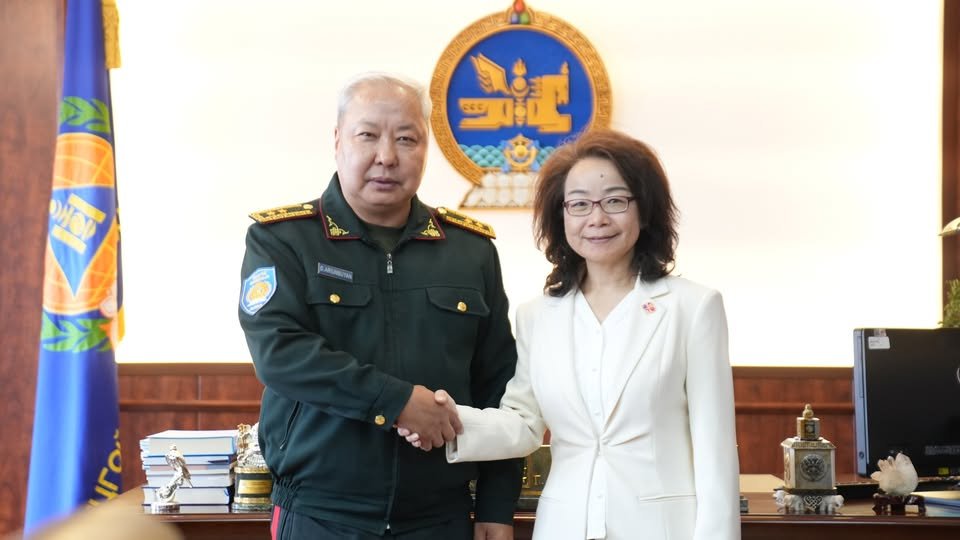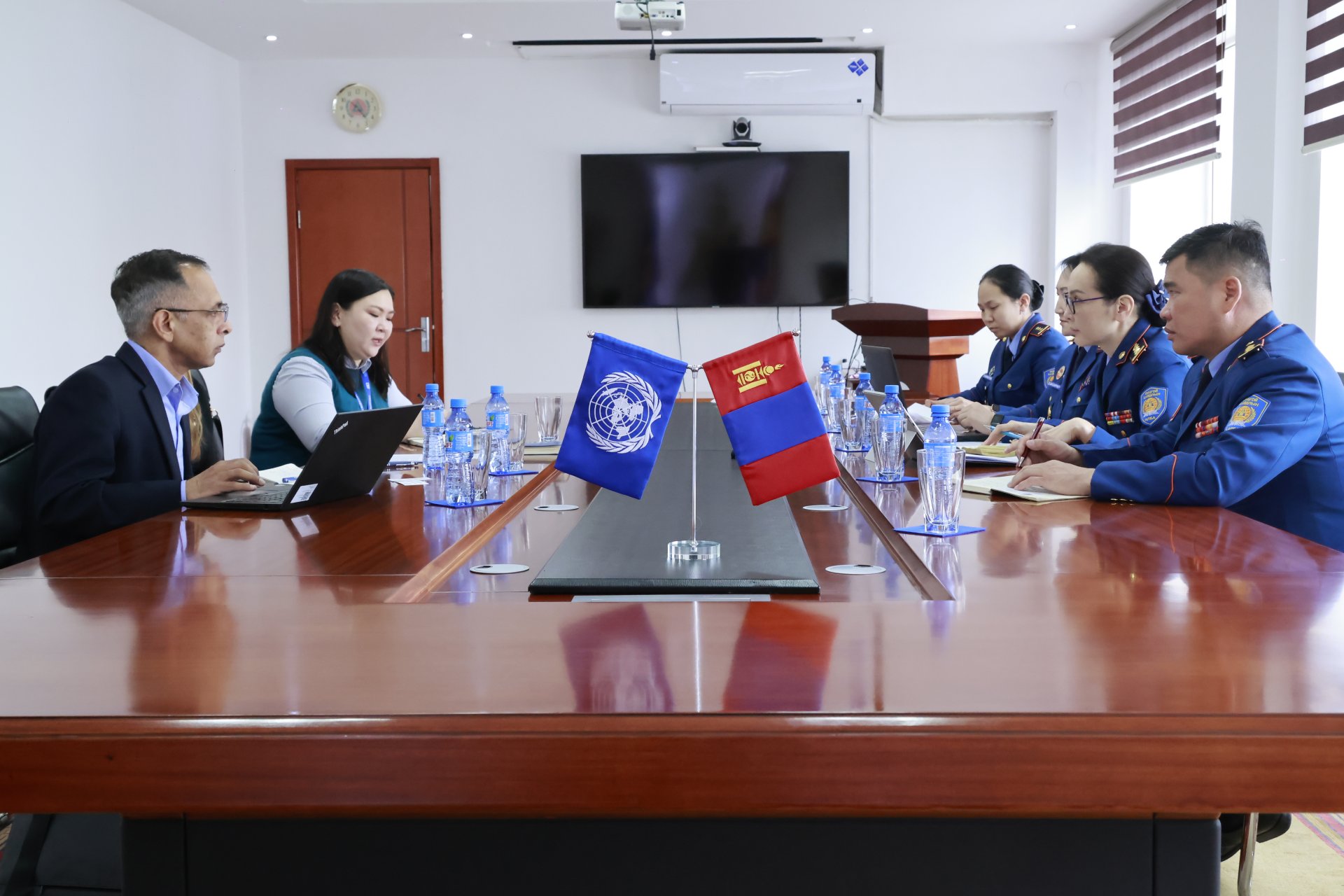The Emergency Operations Center of State Emergency Commission received the ambassadors and representatives of international organizations in Mongolia.
At the meeting attended by UN Resident Coordinator Tapami Mishra, Ambassadors of the embassies in Mongolia from China, Australia, the United States, and Germany, and representatives of the international organizations such as UN Peace Corps, Save the Children, Caritas Mongolia, WHO, Mercy Corps, World Vision and ADRA Mongolia, People In Need over the 30 representatives participated.
At the beginning of the meeting, Deputy Chief of NEMA, Head of the Emergency Operations Center, Brigadier General B.Uuganbayar intraduced the presentation about the winter situation.
90 percent of the total territory was considered as high risk and 10 percent as medium risk, and the high risk area increased by 20 percent. By aimags, most areas of Arkhangai, Bayan-Ulgii, Bayankhongor, Gobi-Altai, Zavkhan, Uvs, Khovd, Umnugobi, Sukhbaatar, Khentii, and Dornogobi aimags, some areas of Uvurkhangai, Khuvsgul, Bulgan, Tuv, Dundgobi, and Dornod aimags are at high risk.
It was emphasized that a total of 2,162 emergency medical aid and hygiene and sanitation packages have been prepared by international humanitarian organizations such as WHO, UNICEF, and UNFPA expressed readiness to support based on the research of the target group by the Emergency Operation Center of State Emergency Commission.
During the meeting, exchanged views on providing support to the herders of the province and soum where winter is hardened, focusing on the proper distribution of international aid and cooperation.
Copy all texts of this article
Download all images of this article
Other news

2024/01/12
Recent NewsExchange of views on bilateral cooperation
Ambassador Shen Minjuan emphasized her commitment to prioritizing and further enhancing cooperation between the two countries in the field of disaster prevention and protection.

2024/01/12
Recent NewsKey topics included setting a date for the event and finalizing the detailed organizational plan
Ulaanbaatar, May 15, 2025 – Colonel Ts. Uranchimeg, Deputy Chief of the National Emergency Management Agency (NEMA) of Mongolia, held a meeting today with Ms. Matilda Dimovska, Resident Representative of the United Nations Development Programme (UNDP) in Mongolia.

2024/01/12
Recent NewsKey topics included setting a date for the event and finalizing the detailed organizational plan
Ulaanbaatar, May 15, 2025 – Colonel Ts. Uranchimeg, Deputy Chief of the National Emergency Management Agency (NEMA) of Mongolia, held a meeting today with Ms. Matilda Dimovska, Resident Representative of the United Nations Development Programme (UNDP) in Mongolia.







